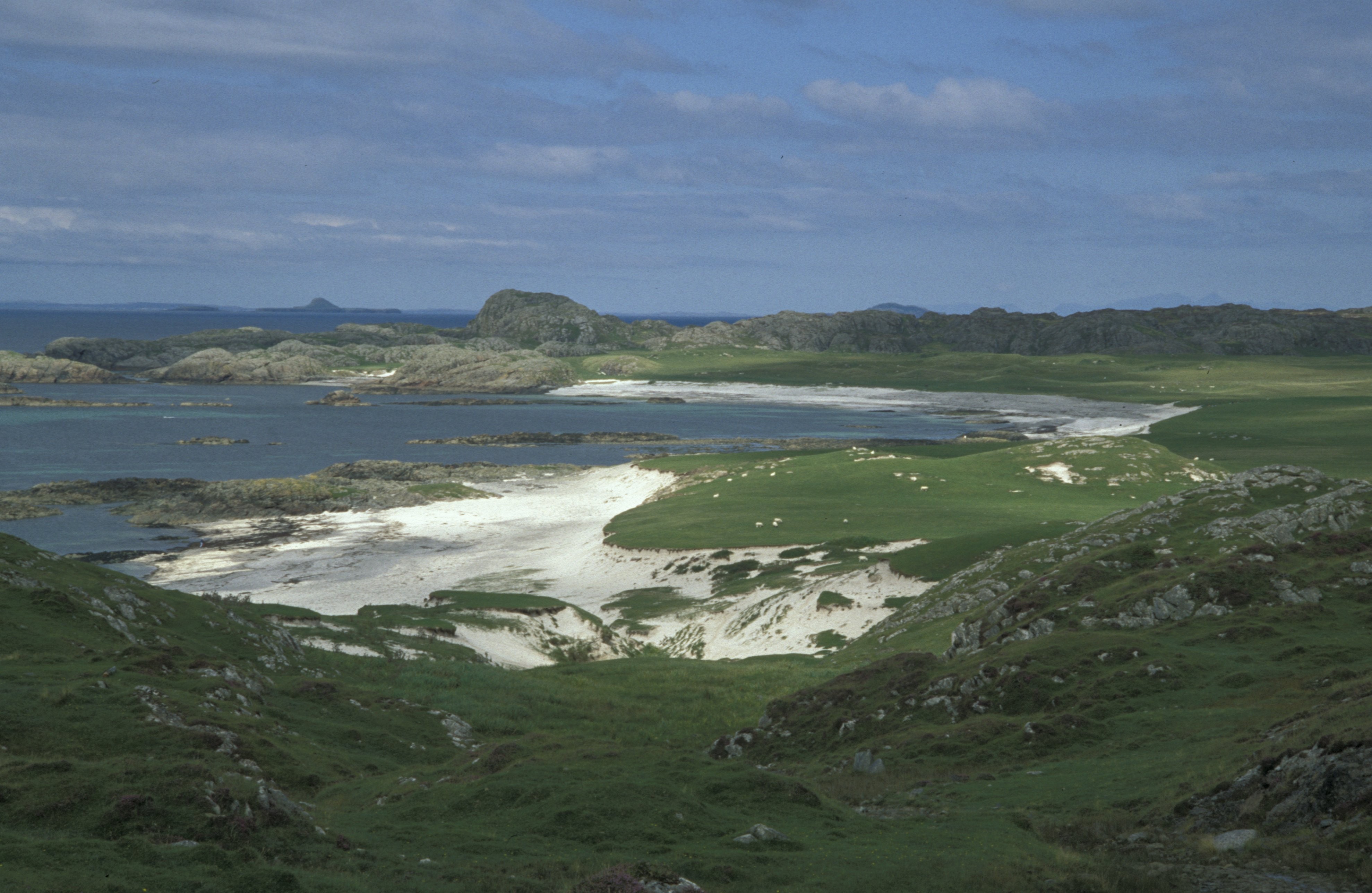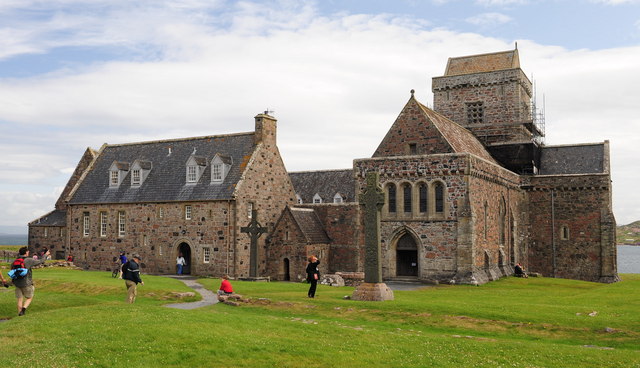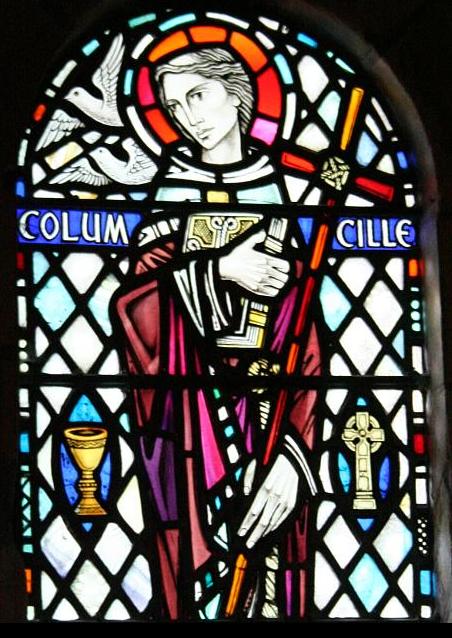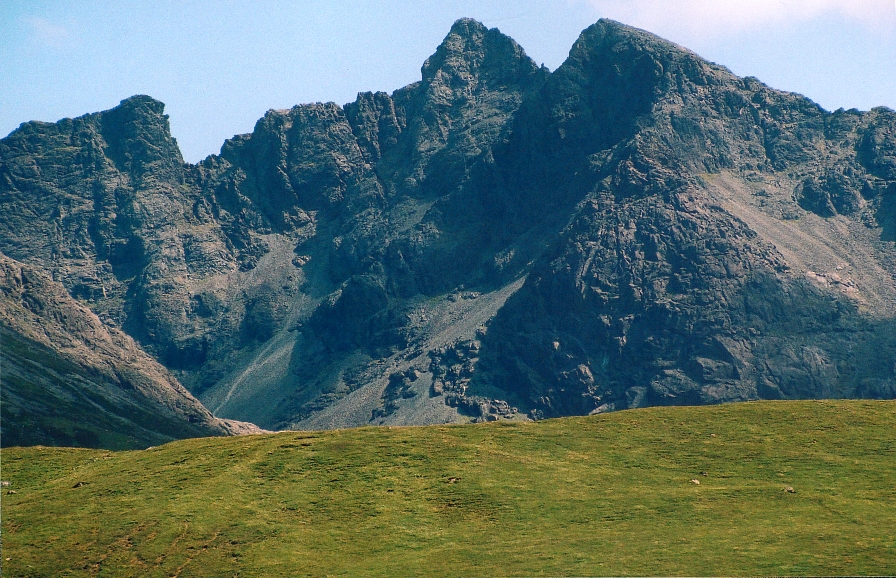|
Iona
Iona (; , sometimes simply ''Ì'') is an island in the Inner Hebrides, off the Ross of Mull on the western coast of Scotland. It is mainly known for Iona Abbey, though there are other buildings on the island. Iona Abbey was a centre of Gaelic monasticism for three centuries and is today known for its relative tranquility and natural environment. It is a tourist destination and a place for spiritual retreats. Its modern Scottish Gaelic name means "Iona of (Saint) Columba" (formerly anglicised as "Icolmkill"). In 2019, Iona's estimated population was 120. In March 1980, the Hugh Fraser Foundation donated much of the main island (and its off-lying islands) to the current owner, the National Trust for Scotland. The abbey and some church buildings are owned by the Iona Cathedral Trust. One publication, describing the religious significance of the island, says that the island is "known as the birthplace of Celtic Christianity in Scotland,” and notes that “St Columba came here ... [...More Info...] [...Related Items...] OR: [Wikipedia] [Google] [Baidu] [Amazon] |
Iona Abbey
Iona Abbey is an abbey located on the island of Iona, just off the Isle of Mull on the West Coast of Scotland. It is one of the oldest History of early Christianity, Christian religious centres in Western Europe. The abbey was a focal point for the spread of Christianity throughout Scotland and marks the foundation of a monastic community by Columba, St. Columba, when Iona was part of the Kingdom of Dál Riata. Aidan of Lindisfarne, Saint Aidan served as a monk at Iona, before helping to reestablish Christianity in Northumberland, on the island of Lindisfarne. In the 12th century, the Macdonald lords of Clan Donald made Iona the ecclesiastical capital of the Royal Family of Macdonald, and subsequent Lords of the Isles into the early 16th century endowed and maintained the abbey, church and nunnery. Two of the Macdonalds (each named Angus) became Bishops of the Isles with the bishop's seat at Iona. St. Oran's chapel was the burial place for the Lords as evidenced by their gra ... [...More Info...] [...Related Items...] OR: [Wikipedia] [Google] [Baidu] [Amazon] |
Columba
Columba () or Colmcille (7 December 521 – 9 June 597 AD) was an Irish abbot and missionary evangelist credited with spreading Christianity in what is today Scotland at the start of the Hiberno-Scottish mission. He founded the important abbey on Iona, which became a dominant religious and political institution in the region for centuries. He is the patron saint of Derry. He was highly regarded by both the Gaels of Dál Riata and the Picts, and is remembered today as a Catholic saint and one of the Twelve Apostles of Ireland. Columba studied under some of Ireland's most prominent church figures and founded several monasteries in the country. Around 563 AD he and his twelve companions crossed to Dunaverty near Southend, Argyll, in Kintyre before settling in Iona in Scotland, then part of the Ulster kingdom of Dál Riata, where they founded a new abbey as a base for spreading Celtic Christianity among the pagan Northern Pictish kingdoms. He remained active in Irish politics ... [...More Info...] [...Related Items...] OR: [Wikipedia] [Google] [Baidu] [Amazon] |
Adomnán
Adomnán or Adamnán of Iona (; , ''Adomnanus''; 624 – 704), also known as Eunan ( ; from ), was an abbot of Iona Abbey ( 679–704), hagiographer, statesman, canon jurist, and Christian saint, saint. He was the author of the ''Life of Columba'' (), probably written between 697 and 700. This biography is by far the most important surviving work written in early-medieval Scotland, and is a vital source for our knowledge of the Picts, and an insight into the life of Iona and the early-medieval Gaels, Gaelic monk. Adomnán promulgated the Cáin Adomnáin, Law of Adomnán or "Law of Innocents" (). He also wrote the treatise ('On Holy Places'), an account of the great Christian holy places and centres of pilgrimage. Adomnán got much of his information from a Franks, Frankish bishop called Arculf, who had personally visited Egypt, Rome, Constantinople and the Holy Land, and visited Iona afterwards. Life Adomnán was born about 624, a relative on his father's side of Col ... [...More Info...] [...Related Items...] OR: [Wikipedia] [Google] [Baidu] [Amazon] |
Isle Of Mull
The Isle of Mull or simply Mull ( ) is the second-largest island of the Inner Hebrides (after Skye) and lies off the west coast of Scotland in the Council areas of Scotland, council area of Argyll and Bute. Covering , Mull is the fourth-largest island in Scotland. From 2001 to 2020, the population has gradually increased: during 2020 it was estimated to be 3,000, in the United Kingdom Census 2011, 2011 census it was about 2,800, and in 2001, it was measured at 2,667 people. It has the eighth largest island population in Scotland. In the summer, these numbers are augmented by an influx of many tourists. Much of the year-round population lives in the colourful main settlement of Tobermory, Mull, Tobermory. There are two distilleries on the island: the Tobermory distillery, formerly named Ledaig, produces single malt Scotch whisky and another, opened in 2019 and located in the vicinity of Tiroran, which produces Whitetail Gin. Mull is host to numerous sports competitions, nota ... [...More Info...] [...Related Items...] OR: [Wikipedia] [Google] [Baidu] [Amazon] |
Vita Columbae
The ''Life of Columba'' () is a hagiography recounting the life of Columba, the founder of Iona Abbey, written a century after Columba's death by Adomnán, one of his successors as Abbot of Iona. Adomnán (also known as Eunan), served as the ninth Abbot of Iona until his death in 704. James Earle Fraser asserts that Adomnán drew extensively from an existing body of accounts regarding the life of Columba, including a Latin collection entitled ''De uirtutibus sancti Columbae'', composed c. 640 A.D. This earlier work is attributed to Cummene Find, who became the abbot of Iona and served as the leader of the monastic island community from 656 until his death in 668 or 669 A.D. While the ''Vita Columbae'' often conflicts with contemporaneous accounts of various battles, figures, and dates, it remains the most important surviving work from early medieval Scotland and provides a wealth of knowledge regarding the Picts and other ethnic and political groups from this time period. The Vit ... [...More Info...] [...Related Items...] OR: [Wikipedia] [Google] [Baidu] [Amazon] |
Inner Hebrides
The Inner Hebrides ( ; ) is an archipelago off the west coast of mainland Scotland, to the south east of the Outer Hebrides. Together these two island chains form the Hebrides, which experience a mild oceanic climate. The Inner Hebrides comprise 35 inhabited islands as well as 44 uninhabited islands with an area greater than . Skye, Isle of Mull, Mull, and Islay are the three largest, and also have the highest populations. The main commercial activities are tourism, crofting, fishing and Scotch whisky, whisky distilling. In modern times the Inner Hebrides have formed part of two separate local government jurisdictions, one to the north and the other to the south. Together, the islands have an area of about , and had a population of 18,948 in 2011. The population density is therefore about . There are various important prehistoric structures, many of which pre-date the first written references to the islands by Classical antiquity, Roman and Greek authors. In the historic period ... [...More Info...] [...Related Items...] OR: [Wikipedia] [Google] [Baidu] [Amazon] |
Argyll And Bute
Argyll and Bute (; , ) is one of 32 unitary authority, unitary council areas of Scotland, council areas in Scotland and a lieutenancy areas of Scotland, lieutenancy area. The current lord-lieutenant for Argyll and Bute is Jane Margaret MacLeod (14 July 2020). The administrative centre for the council area is in Lochgilphead at Kilmory Castle, a 19th-century Gothic Revival building and estate. The current council leader is Councillor Jim Lynch. Argyll and Bute covers the second-largest administrative area of any Scottish council. The council area adjoins those of Highland (council area), Highland, Perth and Kinross, Stirling (council area), Stirling and West Dunbartonshire. History The County of County of Bute, Bute and the County of Argyll were two of the shires of Scotland, historic counties of Scotland. They were both "''shires''" (context; the area controlled by a sheriff principal, sheriff) in the Middle Ages. From 1890 until 1975 both counties had individual separate ele ... [...More Info...] [...Related Items...] OR: [Wikipedia] [Google] [Baidu] [Amazon] |
Hiberno-Scottish Mission
The Hiberno-Scottish mission was a series of expeditions in the 6th and 7th centuries by Gaels, Gaelic Missionary, missionaries originating from Ireland that spread Celtic Christianity in Scotland, Wales, History of Anglo-Saxon England, England and Merovingian dynasty, Merovingian lands. Catholic Christianity spread first within Ireland. Since the 8th and 9th centuries, these early missions were called 'Celtic Christianity'. There is dispute over the relationship of the Hiberno-Scottish mission to Catholic Church, Catholic Christianity. Catholic sources claim it functioned under the authority of the Holy See, while Protestant historians highlight conflicts between Celtic and Roman clergy. There is agreement that the Mission (Christianity), mission was not strictly coordinated. As a whole, Celtic-speaking areas were part of Latin Christendom at a time when there was significant Catholic Liturgical Rites, regional variation of liturgy and structure, but a general collective venerati ... [...More Info...] [...Related Items...] OR: [Wikipedia] [Google] [Baidu] [Amazon] |
Hebrides
The Hebrides ( ; , ; ) are the largest archipelago in the United Kingdom, off the west coast of the Scotland, Scottish mainland. The islands fall into two main groups, based on their proximity to the mainland: the Inner Hebrides, Inner and Outer Hebrides. These islands have a long history of occupation (dating back to the Mesolithic period), and the culture of the inhabitants has been successively influenced by the cultures of Celtic language, Celtic-speaking, Old Norse language, Norse-speaking, and English language, English-speaking peoples. This diversity is reflected in the various names given to the islands, which are derived from the different languages that have been spoken there at various points in their history. The Hebrides are where much of Scottish Gaelic literature and Gaelic music has historically originated. Today, the economy of the islands is dependent on crofting, fishing, tourism, the oil industry, and renewable energy. The Hebrides have less biodiversity t ... [...More Info...] [...Related Items...] OR: [Wikipedia] [Google] [Baidu] [Amazon] |
Ross Of Mull
The Ross of Mull (Scottish Gaelic: ''An Ros Mhuileach'') is the largest peninsula of the Isle of Mull, about long, and makes up the south-western part of the island. It is bounded to the north by Loch Scridain and to the south by the Firth of Lorne. The main villages are Bunessan and Fionnphort, with smaller settlements including Ardtun, Camas, Carsaig, Knockan, Pennyghael and Uisken. Knocknafenaig, Suidhe, and Shiaba are three of the many cleared settlements on the Ross. Historically the area's main industries consisted of crofting, fishing, kelp, and granite quarries. By 2011 this had shifted with tourism becoming the greatest employer accounting for 29% of employment, while between them farming and fishing made up 15%. The 1886 novel ''Kidnapped'' by Robert Louis Stevenson is partially set on the island of Erraid, a tidal island to the south west of the Ross of Mull. The 1945 film '' I Know Where I'm Going!'', directed by Michael Powell and Emeric Pressburger, ... [...More Info...] [...Related Items...] OR: [Wikipedia] [Google] [Baidu] [Amazon] |
Scotland
Scotland is a Countries of the United Kingdom, country that is part of the United Kingdom. It contains nearly one-third of the United Kingdom's land area, consisting of the northern part of the island of Great Britain and more than 790 adjacent Islands of Scotland, islands, principally in the archipelagos of the Hebrides and the Northern Isles. To the south-east, Scotland has its Anglo-Scottish border, only land border, which is long and shared with England; the country is surrounded by the Atlantic Ocean to the north and west, the North Sea to the north-east and east, and the Irish Sea to the south. The population in 2022 was 5,439,842. Edinburgh is the capital and Glasgow is the most populous of the cities of Scotland. The Kingdom of Scotland emerged as an independent sovereign state in the 9th century. In 1603, James VI succeeded to the thrones of Kingdom of England, England and Kingdom of Ireland, Ireland, forming a personal union of the Union of the Crowns, three kingdo ... [...More Info...] [...Related Items...] OR: [Wikipedia] [Google] [Baidu] [Amazon] |
Walafrid Strabo
Walafrid, alternatively spelt Walahfrid, nicknamed Strabo (or Strabus, i.e. " squint-eyed") (c. 80818 August 849), was an Alemannic Benedictine monk and theological writer who lived on Reichenau Island in southern Germany. Life Walafrid Strabo was born about 805 in Swabia. He was educated at Reichenau Abbey, where he had for his teachers Tatto and Wetti, to whose visions he devotes one of his poems. Then he went on to the monastery of Fulda, where he studied for some time under Rabanus Maurus before returning to Reichenau, of which monastery he was made abbot in 838. For unclear reasons, he was expelled from his house and went to Speyer. According to his own verses, it seems that the real cause of his flight was that, notwithstanding the fact that he had been tutor to Charles the Bald, he espoused the side of his elder brother Lothair I on the death of Louis the Pious in 840. He was, however, restored to his monastery in 842, and died in 849 on an embassy to his former pupi ... [...More Info...] [...Related Items...] OR: [Wikipedia] [Google] [Baidu] [Amazon] |








